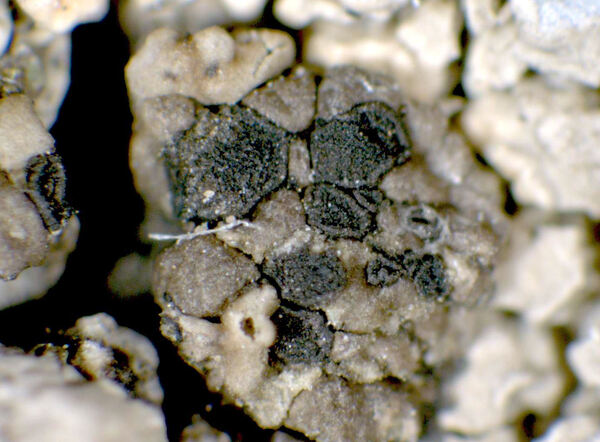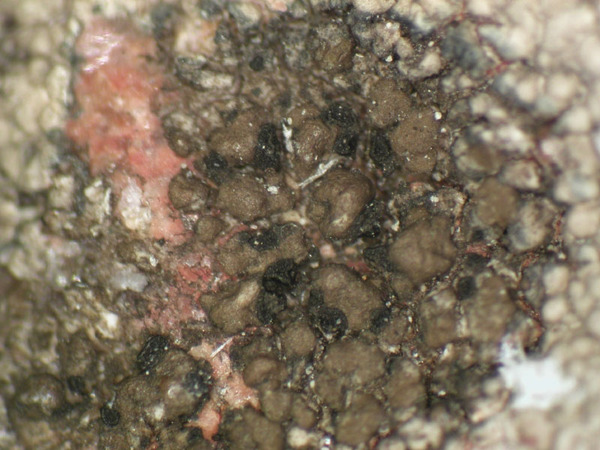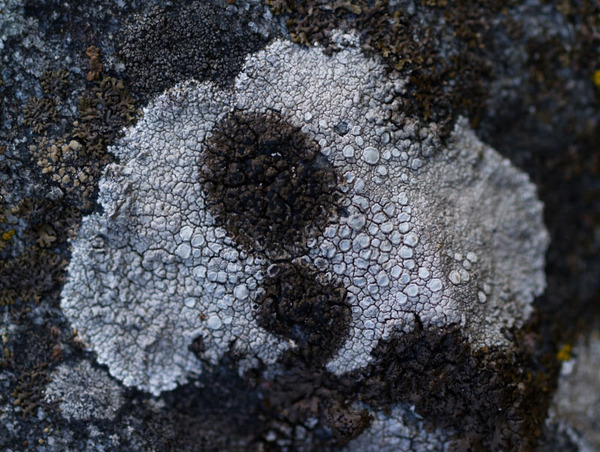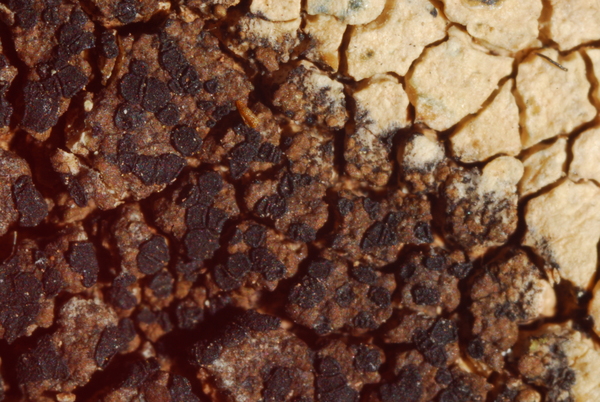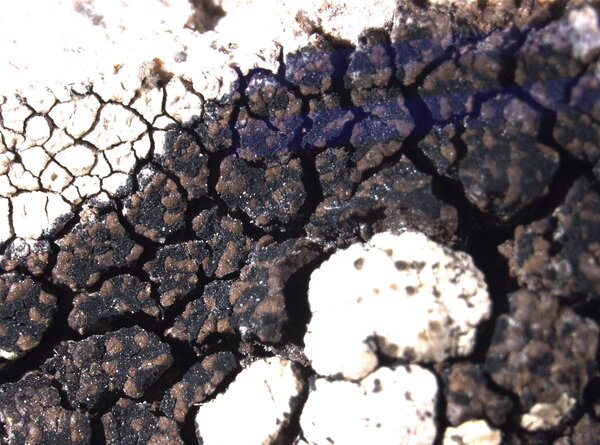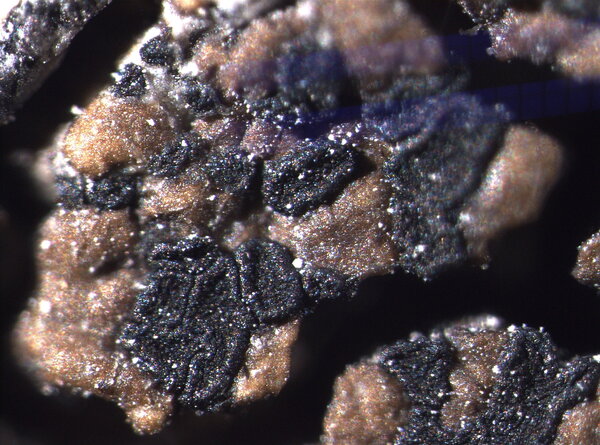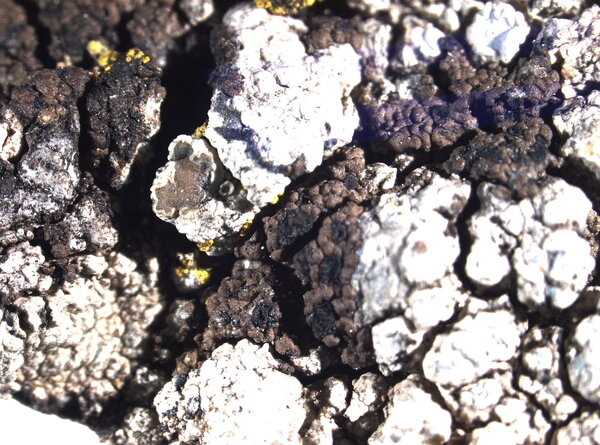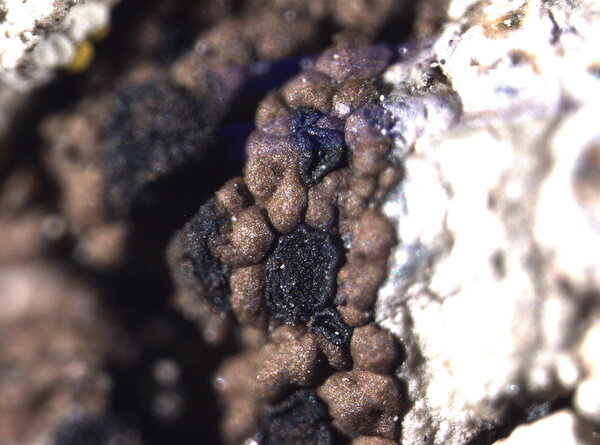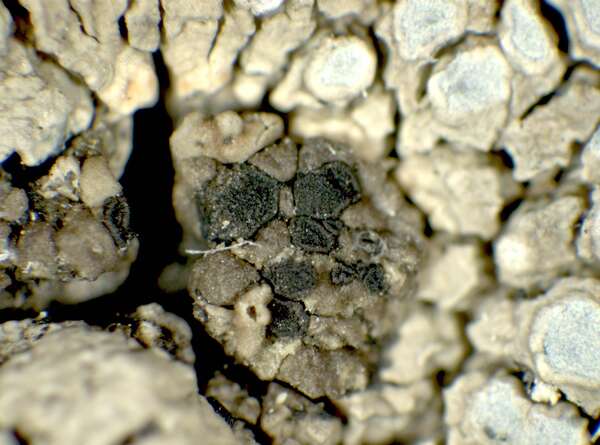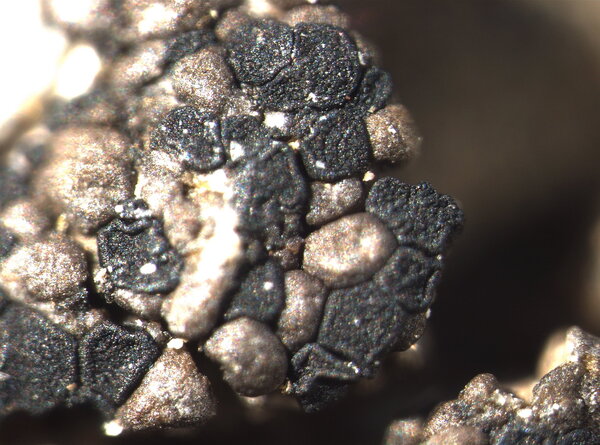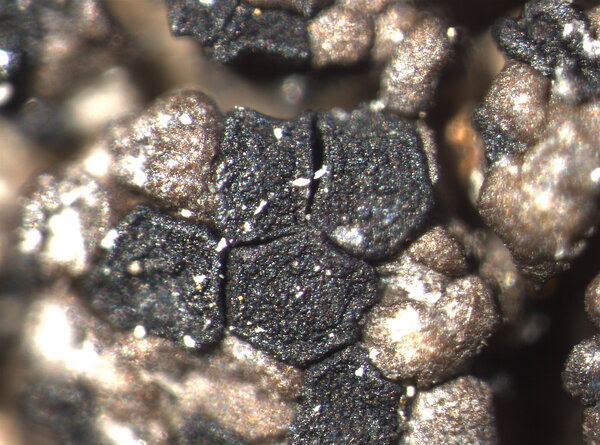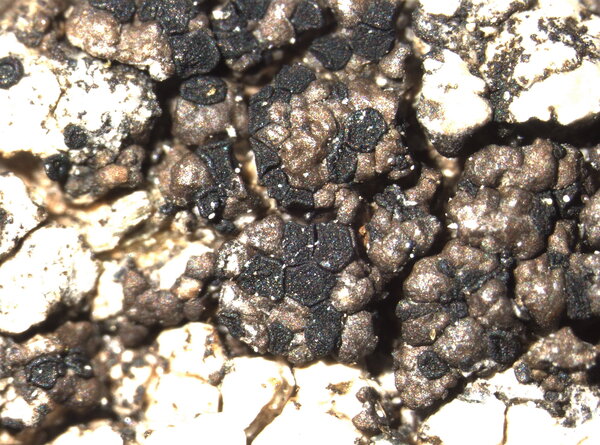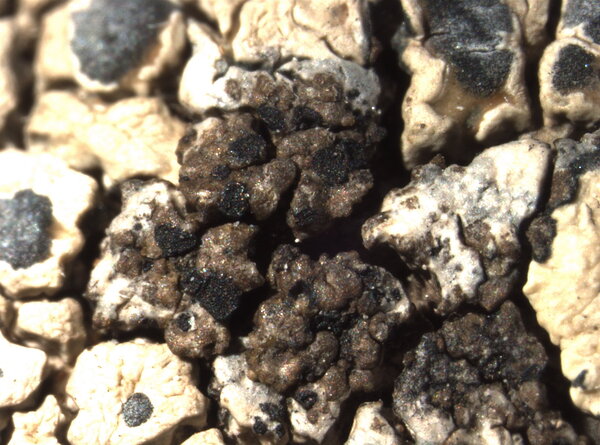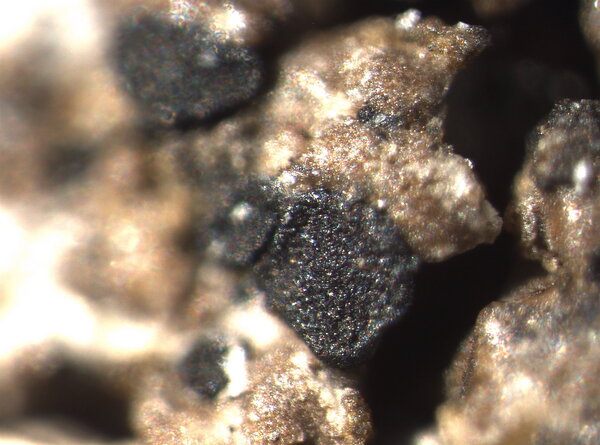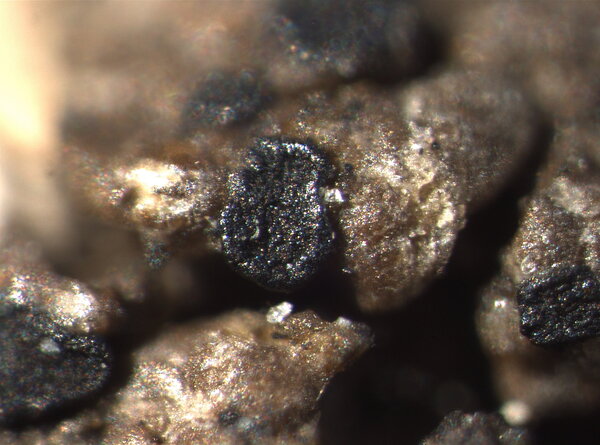Lambiella insularis (Nyl.) T. Sprib.
in Spribille & al., Symb. Bot. Upsal., 37, 1: 25, 2015. Basionym: Lecidea insularis Nyl. - Bot. Not.: 177, 1852.
Synonyms: Biatora intumescens (Flörke ex Flot.) Hepp; Lecidea intumescens (Flörke ex Flot.) Nyl.; Lecidella intumescens (Flörke ex Flot.) Arnold; Nesolechia intumescens (Flörke ex Flot.) Sacc. & D. Sacc.; Rimularia insularis (Nyl.) Rambold & Hertel; Toninia intumescens (Flörke ex Flot.) Boistel
Description: Thallus crustose, episubstratic, areolate, grey-brown to dark brown, often with an olive tinge, dull to usually somewhat shiny, up to 0.3 mm thick, often delimited by a dark prothallus, forming more or less orbicular, up to 3.5 cm (usually less) wide patches on the thalli of species of the Glaucomaria rupicola-complex. Areoles contiguous, more or less rounded, convex to almost bullate, 0.2-0.5(-0.9) mm in diam., smooth, corticate. Cortex brown-pigmented in upper part, 10-30 µm thick, overlain by a 2-10 µm thick epinecral layer; medulla white, I-. Apothecia black, lecideine, orbicular to irregular in outline, at first sunken between the areoles, then sessile, not constricted at base, 0.2-0.5(-0.7) mm across, with a flat to slightly convex, smooth, dull, epruinose disc and a thin, black, raised, flexuose, persistent proper margin. Proper exciple black-brown in outer part, colourless to brown within, 20-40 µm thick in upper part, 50-70 µm thick in lower part; epithecium olivaceous to brown, 10-15 µm thick, K-; hymenium colourless, 50-75 µm high, I+ red; paraphyses branched and often anastomosing, c. 2 µm thick in lower part, the apical cells submoniliform, slightly swollen, c. 4 µm wide; hypothecium dark brown to black-brown, 100-230 µm high. Asci 8-spored, clavate, with a K/I+ blue tholus with a funnel-shaped central unstained region, and a small, obconical K/I+ blue dome, 35-55 x 11-15 µm. Ascospores 1-celled, at first hyaline, finally often pale brown, ellipsoid, 8-14.5 x (4-)4.5-6(-7) µm. Pycnidia black, immersed in the thallus. Conidia short-bacilliform, c. 4 x 1 µm. Photobiont chlorococcoid. Spot tests: cortex and medulla K-, C+ pink, KC+ pink (reactions often fleeting), P-, UV-. Chemistry: gyrophoric acid.
Growth form: Crustose
Substrata: rocks
Photobiont: green algae other than Trentepohlia
Reproductive strategy: mainly sexual
paras Lecanora rupicola s.lat.
Commonnes-rarity: (info)
Alpine belt: rather common
Subalpine belt: common
Montane belt: rare
Dry submediterranean belt: extremely rare
Humid submediterranean belt: very rare
Padanian area: absent
pH of the substrata:
1 2 3 4 5
Solar irradiation:
1 2 3 4 5
Aridity:
1 2 3 4 5
Eutrophication:
1 2 3 4 5
Poleotolerance:
0 1 2 3
Altitudinal distribution:
1 2 3 4 5 6
Rarity
absent
extremely rare
very rare
rare
rather rare
rather common
common
very common
extremely common
Loading data...
Occurrence data
Predictive map
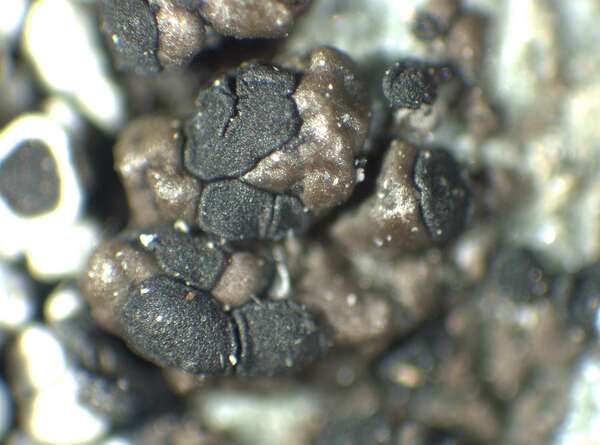
P.L. Nimis; Owner: Department of Life Sciences, University of Trieste
Herbarium: TSB (35218)
2002/07/11
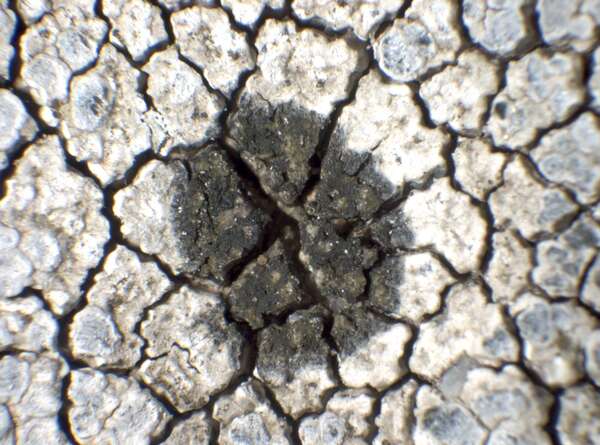
P.L. Nimis; Owner: Department of Life Sciences, University of Trieste
Herbarium: TSB (34929)
2002/02/22
on the host, Lecanora rupicola
Growth form: Crustose
Substrata: rocks
Photobiont: green algae other than Trentepohlia
Reproductive strategy: mainly sexual
paras Lecanora rupicola s.lat.
Commonnes-rarity: (info)
Alpine belt: rather common
Subalpine belt: common
Montane belt: rare
Dry submediterranean belt: extremely rare
Humid submediterranean belt: very rare
Padanian area: absent
pH of the substrata:
| 1 | 2 | 3 | 4 | 5 |
Solar irradiation:
| 1 | 2 | 3 | 4 | 5 |
Aridity:
| 1 | 2 | 3 | 4 | 5 |
Eutrophication:
| 1 | 2 | 3 | 4 | 5 |
Poleotolerance:
| 0 | 1 | 2 | 3 |
Altitudinal distribution:
| 1 | 2 | 3 | 4 | 5 | 6 |
Rarity
absent
extremely rare
very rare
rare
rather rare
rather common
common
very common
extremely common
Loading data...
Occurrence data
Predictive map

P.L. Nimis; Owner: Department of Life Sciences, University of Trieste
Herbarium: TSB (35218)
2002/07/11



